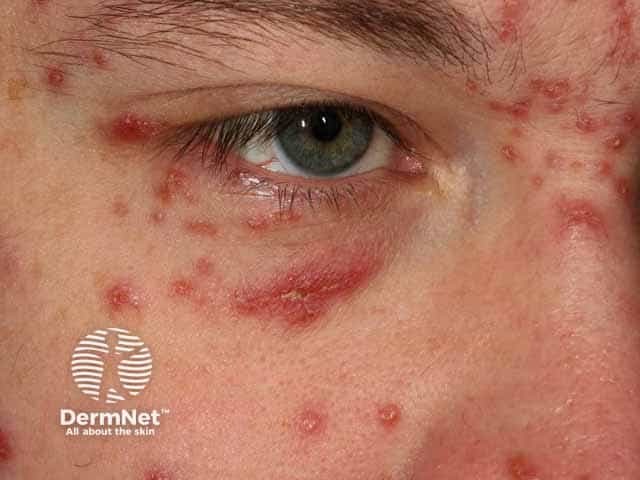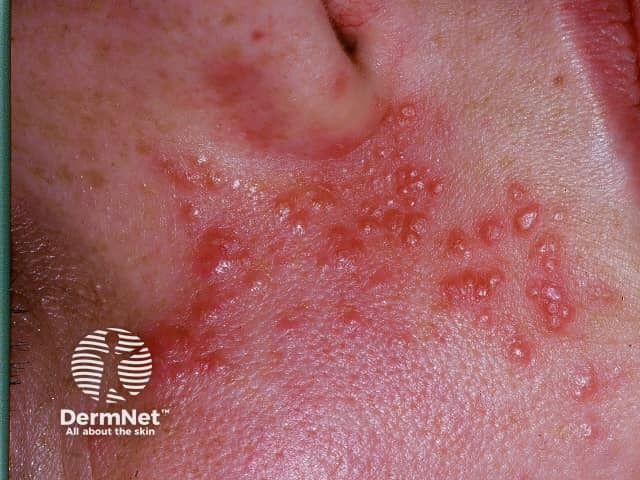Main menu
Common skin conditions

NEWS
Join DermNet PRO
Read more
Quick links
Author: Dr Marisa Taylor MBBS MSc MD (Cardiff), Specialty Doctor in Dermatology; Dr Alun Evans, Consultant Dermatologist, Neath Port Talbot Hospital, Port Talbot, United Kingdom; Chief Editor: Dr Amanda Oakley, Dermatologist, Hamilton, New Zealand, July 2015.
Introduction Demographics Causes Diagnosis Differential diagnoses Treatment
Acne agminata is an uncommon skin disorder characterised by red-brown lumps and bumps on the face, especially the eyelids, forehead, cheeks and chin. It can also affect the armpits.
It was first described by Tilbury Fox as disseminated folliculitis in 1878.
Other names for the disorder include:

Acne agminata

Acne agminata around eyelid

Acne agminata
*Courtesy of Dr Anthony du Vivier
Acne agminata is most commonly found in young adults, although any age group may be affected.
The cause and risk factors for acne agminata remain unknown. It does not appear to be an infection, which has been considered because granulomas are seen on histopathology.
Acne agminata is often a clinical diagnosis.
Typical microscopic changes on skin biopsy include epithelioid granulomas within the dermis, which may be caseating even in the absence of tubercle bacilli.
Other investigations are not usually required once a diagnosis of acne agminata has been made, unless there is a suspicion of other diagnoses such as sarcoidosis or tuberculosis (TB), when the following tests may be considered if appropriate.
Clinical and histopathological diagnoses that should be considered include:
Untreated, acne agminata persists for 2–3 years and then regresses with scarring.
Several treatments have been tried with some success including: